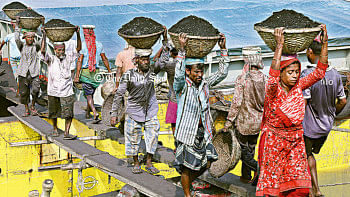Asia's massive infrastructure gap

Asia is suffering from a USD 26 trillion infrastructure gap that threatens future growth. That is the subject matter of a recent report titled "Meeting Asia's Infrastructure Needs" by the Asian Development Bank (ADB). Fast growing economies have been urged to double their spending on transport, power and sanitation. China spends 90 percent of the projected spending which perhaps explains that nation's phenomenal economic growth. However, as pointed out by The Financial Times in a recent article, "This requires countries across the region to double total annual spending to about $1.7 n in areas ranging from transport to basic sanitation. The warning signals that even a big improvement in infrastructure in the past two decades has failed to keep pace with the rapid growth of economies, population and urbanization. The shortfall is most acute outside China." Indeed, as pointed out by Takehiko Nakao, president of ADB, "There is a huge gap still to provide power and roads and railways. All these things are missing."
According to ADB, more than half the estimated spending should go to transport and a third to power which translates into upgrading and building new ports, expanding railways and rail links, and highways that connect countries to regional and global markets. An additional USD 800 billion will be needed for projects that will help an estimated 1.5 billion people who currently have no access to basic sanitation and the other 300 million who are bereft of safe drinking water. One of the largest infrastructure projects of recent times, the East-West Economic Corridor that spans across the Mekon subregion between the coasts of Myanmar and Vietnam, has hit bureaucratic bottlenecks and other regional tensions – critics say, the rate of implementation has not been as expected and hence the obvious benefits have been slow in materialising. Transnational political tensions and bureaucratic wrangling have helped slow down a slew of critical projects like the high-speed rail line that would link Kunming with the Lao capital of Vientiane, Bangkok and Thai coast.
Moving to the South Asian region, we find that Public Private Partnerships (PPPs) could play a major role in advancing many of the envisaged mega projects, but for that to happen some things need to change and change rapidly. There is need for regulatory and institutional reforms that would make it appealing for private investors and open up the prospect of banking finance for PPPs. Countries in our region, including Bangladesh, would have to enact PPP laws, streamline PPP procurement and bidding processes, put into place dispute resolution mechanisms and more importantly, establish independent PPP government units.
There is a significant gap between actual investments and what is needed. What is of import is that the ADB believes the gap must be filled by both public and private sectors. We find that a lot of emphasis has been put on finance reforms which, if implemented, is projected to free up additional revenues that could potentially meet up to 40 percent of the gap (or two percent of the GDP) for 24 economies (excluding China). The situation gets much trickier for private sector investment to fill up the rest of the gap (three percent of GDP), which would require an increase in investments from the current USD 63 billion to as much as USD 250 billion a year over the 2016-2020 period.
With the public sector financing up to 92 percent of all infrastructure needs, it becomes imperative to look into expanding tax and non-tax revenues and getting greater support from multilateral development banks (MDBs). In the case of Bangladesh, we now have access to AIIB (the China-led global financial institution), along with ADB and World Bank (WB). In the Asian context, the ADB and WB have long held sway, with the IFC (WB's private sector development financing unit) committing up to USD 3 billion (which is nearly a third of WB's USD 10 billion commitment to the region). Obviously, this is a spit in the ocean, given Asia's needs (including Bangladesh). Hence, there is no recourse but to increase revenues through tax reform, which does not necessarily mean increasing the tax slabs, but rather calls for improving the tax administration to tap into untapped areas and broadening the tax base. There is also need to narrow subsidies which are a major strain on the national exchequer. Bangladesh has been cutting back on energy subsidies of late, and although it is an unpopular move, sometimes one must swallow the bitter pill because those financial resources can be better spent elsewhere.
Much emphasis has been placed on private sector investments and not without reason. The ADB study states that these investments are important in many sectors including power. Private sector investments can be expanded to other areas including transport and water supply because cost recovery is possible in these areas. But for any significant rise in private investments to happen, countries like ours will have to provide an enabling environment, and put a regulatory regime in place that allows for private finance to play a greater role. There is only so much the public sector can do, given that the national budget in developing countries like Bangladesh must contend with so many different sectors, and financing for all major infrastructure projects cannot be met. Hence it is no longer an option to discount private sector investment.
The writer is Assistant Editor, The Daily Star.


 For all latest news, follow The Daily Star's Google News channel.
For all latest news, follow The Daily Star's Google News channel. 



Comments